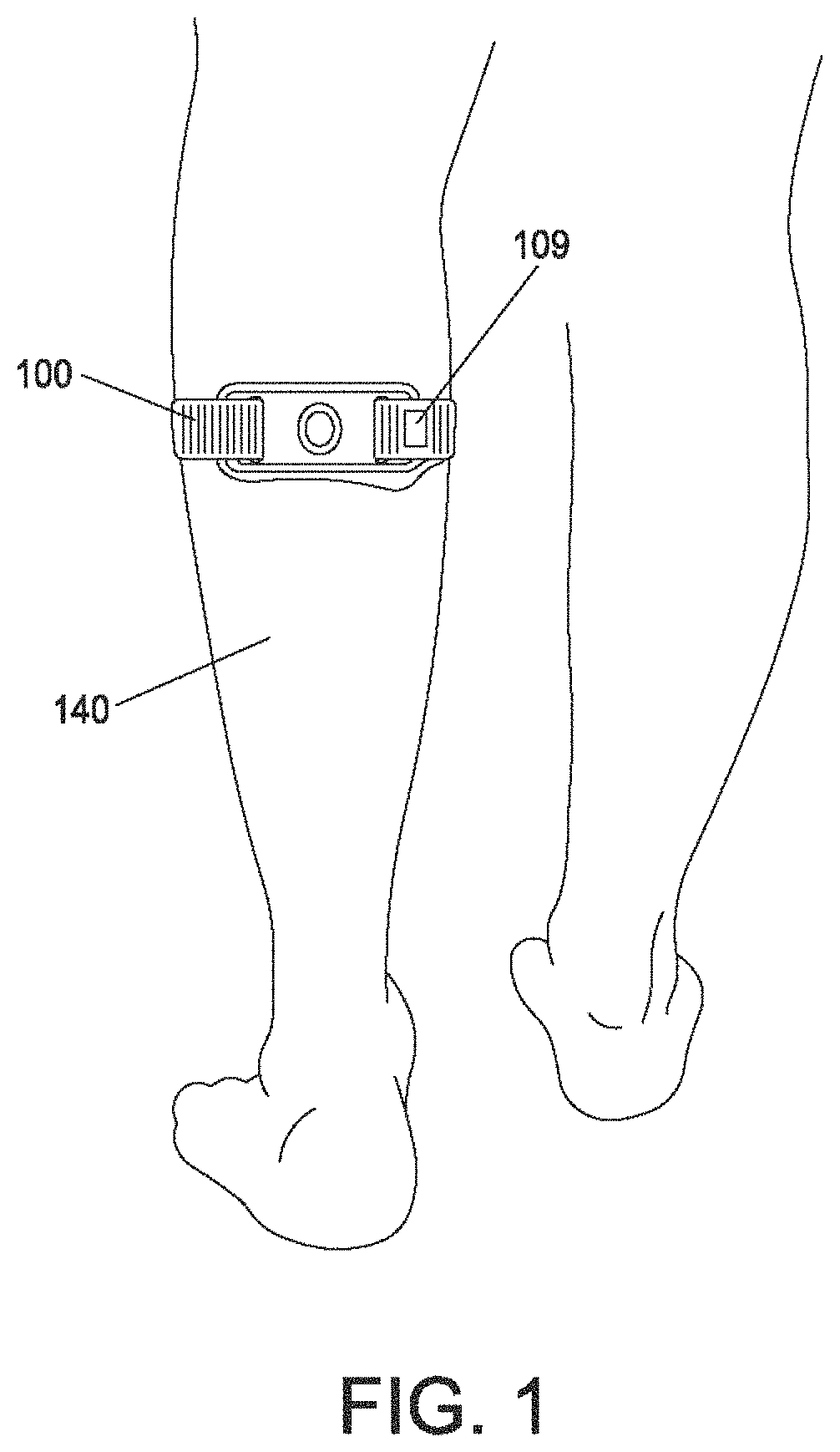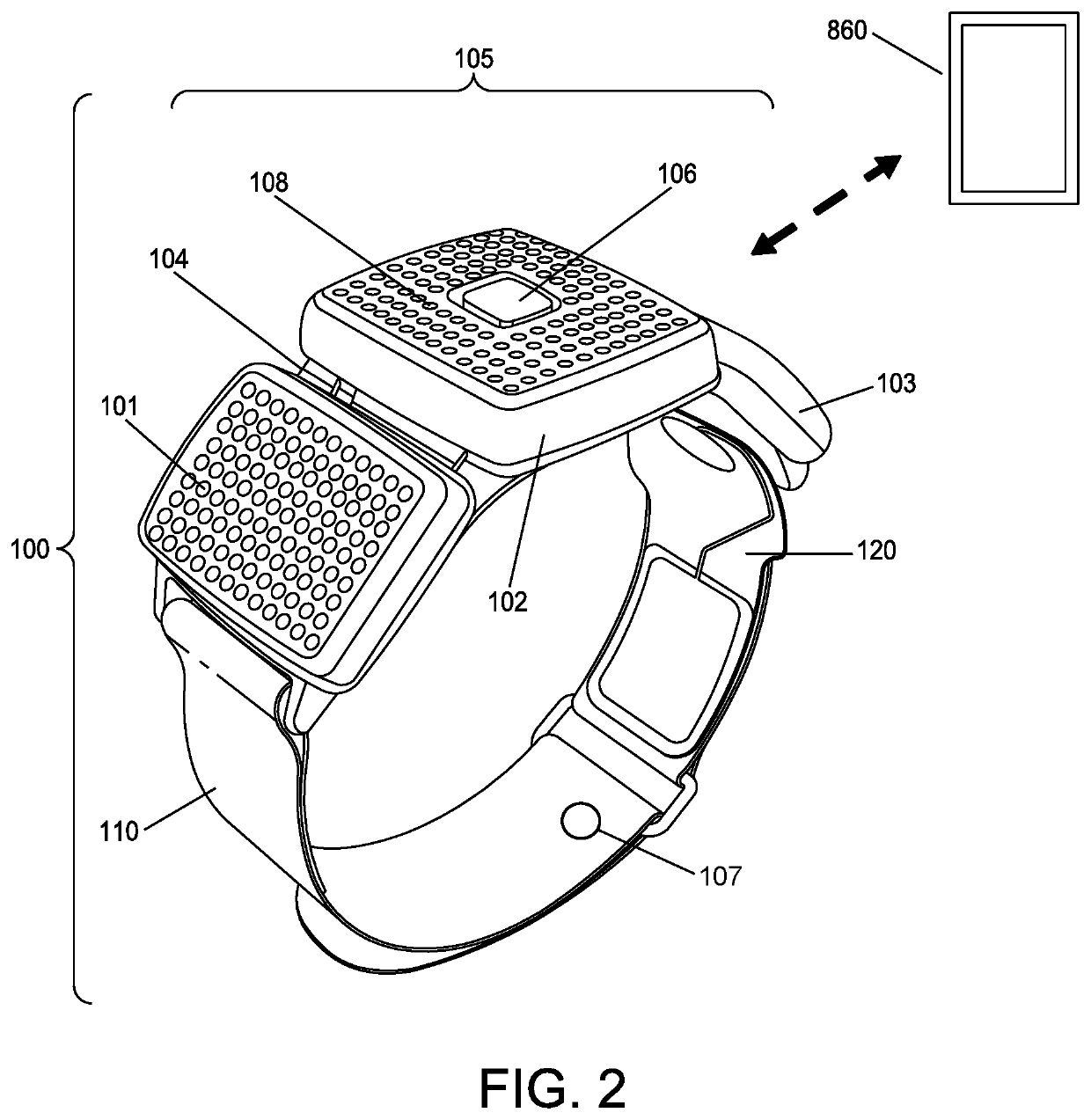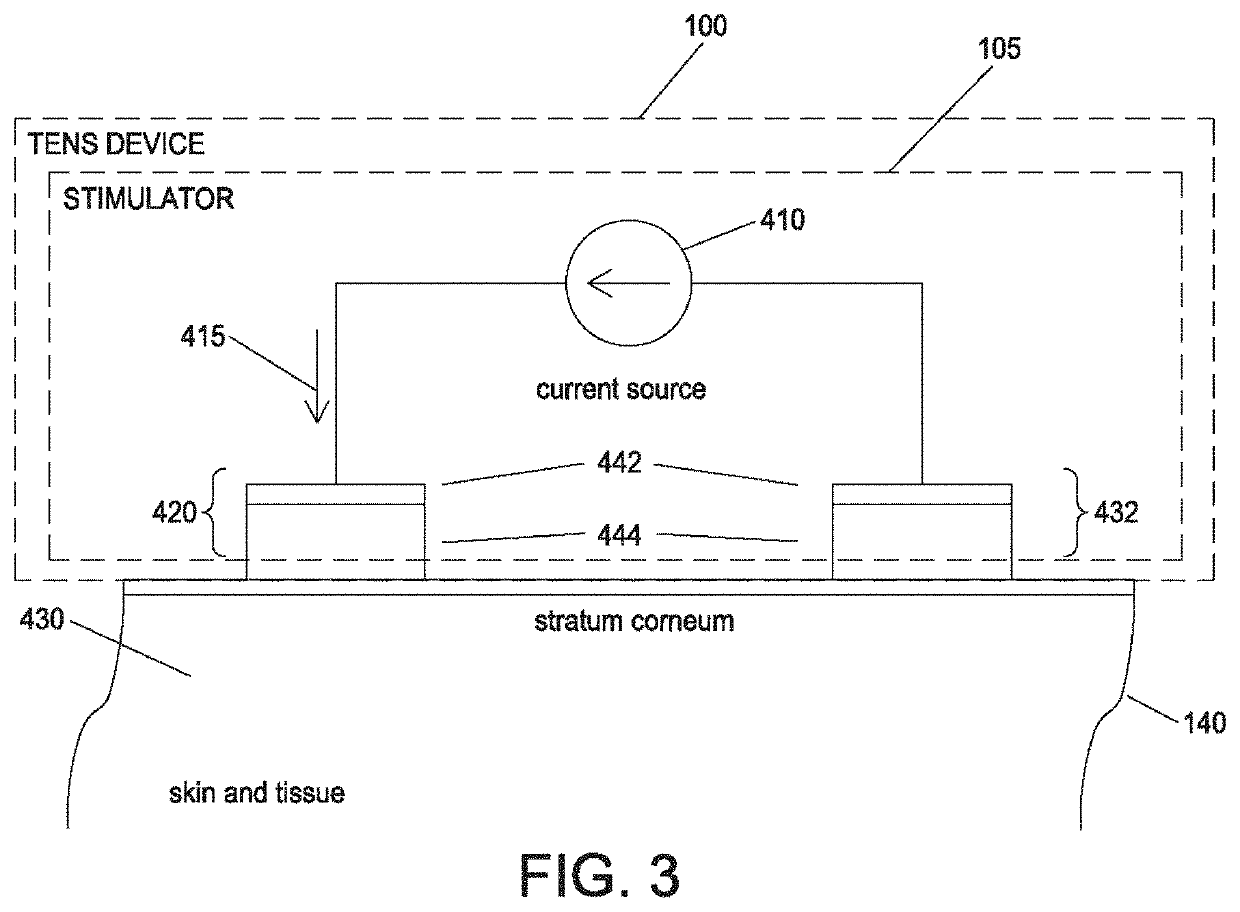Dynamic control of transcutaneous electrical nerve stimulation therapy using continuous sleep detection
a technology continuous sleep detection, which is applied in the field of transcutaneous electrical nerve stimulation devices, can solve the problems of affecting sleep, affecting the effect of tens stimulation, and reducing so as to reduce the likelihood of tens stimulation interferen
- Summary
- Abstract
- Description
- Claims
- Application Information
AI Technical Summary
Benefits of technology
Problems solved by technology
Method used
Image
Examples
Embodiment Construction
The Novel TENS Device in General
[0087]FIG. 1 illustrates a novel TENS device 100 formed in accordance with the present invention, with the novel TENS device being shown worn on a user's upper calf 140. A user may wear TENS device 100 on either leg or a user may wear one TENS device 100 on each leg.
[0088]TENS device 100 is shown in greater detail in FIG. 2 and preferably comprises three primary components: a stimulator 105, a strap 110, and an electrode array 120 (comprising a cathode electrode and an anode electrode appropriately connected to stimulator 105 as is well known in the art). Stimulator 105 preferably comprises three mechanically and electrically inter-connected compartments 101, 102, and 103. Compartments 101, 102, 103 are preferably inter-connected by hinge mechanisms 104 (only one of which is shown in FIG. 2), thereby allowing TENS device 100 to conform to the curved anatomy of a user's leg. In a preferred embodiment of the present invention, compartment 102 houses the...
PUM
 Login to View More
Login to View More Abstract
Description
Claims
Application Information
 Login to View More
Login to View More - R&D
- Intellectual Property
- Life Sciences
- Materials
- Tech Scout
- Unparalleled Data Quality
- Higher Quality Content
- 60% Fewer Hallucinations
Browse by: Latest US Patents, China's latest patents, Technical Efficacy Thesaurus, Application Domain, Technology Topic, Popular Technical Reports.
© 2025 PatSnap. All rights reserved.Legal|Privacy policy|Modern Slavery Act Transparency Statement|Sitemap|About US| Contact US: help@patsnap.com



